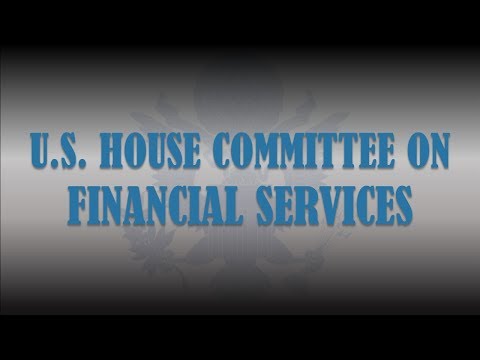Thursday, December 5, 2019 (2:00 PM) — Hearing: «An Examination of the Federal Housing Administration and Its Impact on Homeownership in America»
Connect with the House Financial Services Committee
Get the latest news: https://financialservices.house.gov/
Follow us on Facebook: https://www.facebook.com/FinancialDems/
Follow us on Twitter: https://twitter.com/FSCDems
——————————————-
This hearing will have one panel with a single witness:
• The Honorable Brian Montgomery, Commissioner, Federal Housing Administration
Purpose
This hearing will allow Members to hear from the witness about FHA, an agency within the Department of Housing and Urban Development (HUD) that was created in response to the failure of the banking system during the Great Depression to help stabilize the housing market and the larger economy.
FHA provides insurance on qualifying FHA is designed to play a counter-cyclical role in the housing market, meaning that its
market share expands when the private market recedes, such as during a recession, and decreases when the private market is strong. This helps provide long-term stability to the housing market, particularly during stress events. For example, during the most recent housing crisis, FHA’s market share expanded to fill the gap left by the private sector, helping to keep mortgage credit available for families across the country. Moody’s Analytics estimated that in 2011 alone FHA prevented home prices from dropping an additional 25 percent, which would have cost three million jobs and sent our economy into a double-dip recession. Since then, FHA’s market share has generally been receding as the private market has regained its strength.
FHA’s Financial Health
FHA operates almost entirely from its self-generated income held in the Mutual Mortgage
Insurance Fund (MMIF). The MMIF insures mortgages made by FHA on single-family homes through its single-family mortgage guarantee program and the HECM program. The MMIF consists of two primary accounts: the financing account and the capital reserve account. The financing account is designed to hold sufficient funds to make the expected future payments needed to satisfy FHA’s single-family mortgage guarantees. The capital reserve account holds additional funds, which are available to cover unexpected losses on those guarantees. The MMIF is funded primarily from mortgage insurance premiums (MIPs) and from the sales of foreclosed properties. This revenue is also used to offset annual appropriations for the rest of HUD’s programs.
One of the key ways to measure the health of the MMIF is to look at the capital ratio. The
capital ratio is calculated by taking the economic net worth5 of the MMIF divided by the total dollar amount of loans currently insured under the MMIF (or “total insurance-in-force”). HUD is statutorily required to ensure that the MMIF maintains a capital ratio of 2 percent at all times. A negative capital ratio indicates that that FHA will not be able to cover expected losses over the life of the mortgages it currently insures under current projections. In the rare case of an increase in expected future losses that cannot be covered by the capital reserve account, FHA has authority to draw from the Treasury without additional congressional action. This authority applies to federal credit programs broadly and is not unique to FHA. FHA has only used this authority once in the aftermath of the 2008 crisis.
FHA Policy Changes Under the Trump Administration Suspension of Premium Decrease. Immediately following President Trump’s inauguration,HUD issued an administrative order that suspended a planned quarter-point decrease in annual FHA insurance premiums for most FHA-insured mortgages. This premium cut was projected to save prospective FHA borrowers an average of $500 in the first year alone. While, this change was made prior to Secretary Carson’s official start date at HUD, he has maintained this suspension indefinitely and defended the decision despite the strong financial health of FHA’s MMIF and calls from advocates and stakeholders to lift the suspension. According to research from the National Association of Realtors, between roughly 234,000 creditworthy borrowers were priced out of the homebuying market in 2014 solely due to FHA’s high premiums.
Hearing Page: https://financialservices.house.gov/calendar/eventsingle.aspx?EventID=404857
12/5/2019 — An Examination of the Federal Housing Administration… — (EventID=110288)
